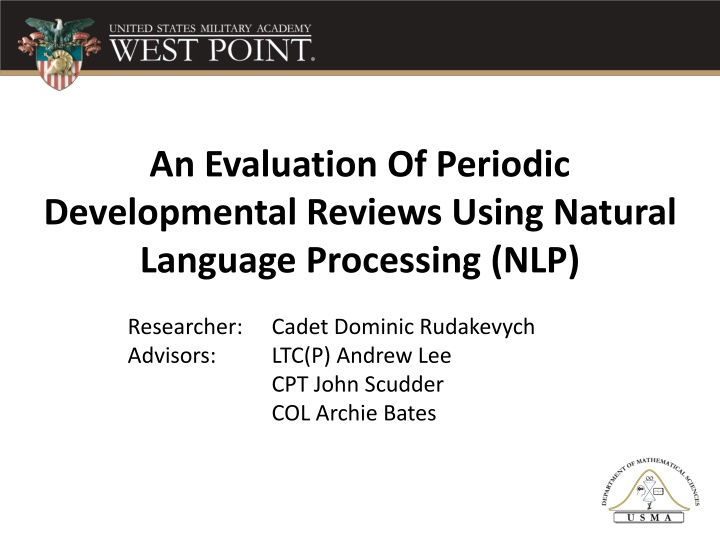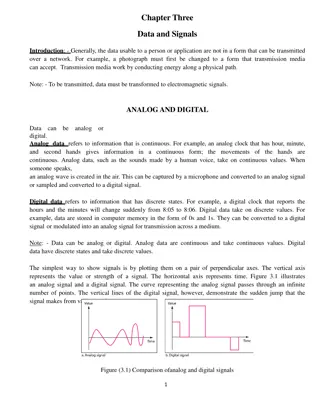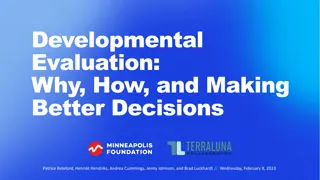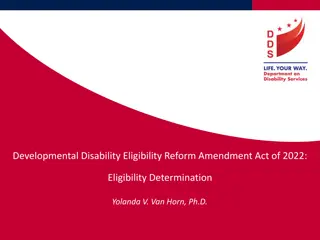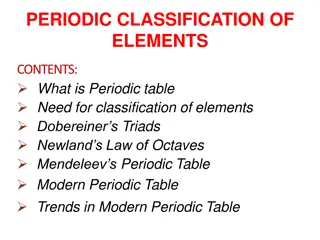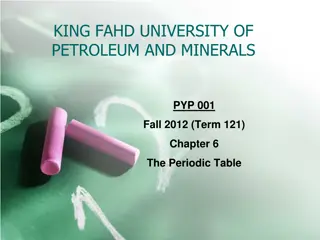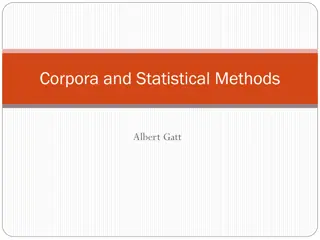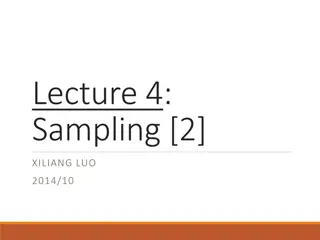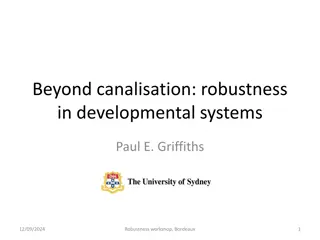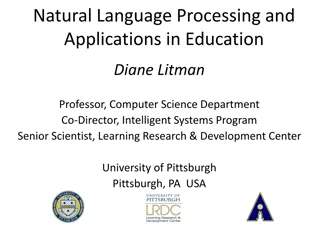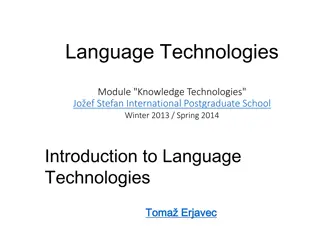Utilizing Natural Language Processing for Periodic Developmental Reviews Analysis
This study focuses on evaluating Periodic Developmental Reviews (PDRs) using Natural Language Processing (NLP) to predict cadet ratings and detect copying of responses. With objectives to analyze text statements in PDRs and investigate the prevalence of response duplication, the research aims to provide insights beyond human text analysis. The importance of this work lies in reexamining PDRs for the US Military Academy and offering advanced analytical tools. Examples, data on PDRs, exploration of rating distributions, and methods like Word2Vec and Cosine Similarity are discussed in the study.
Download Presentation

Please find below an Image/Link to download the presentation.
The content on the website is provided AS IS for your information and personal use only. It may not be sold, licensed, or shared on other websites without obtaining consent from the author.If you encounter any issues during the download, it is possible that the publisher has removed the file from their server.
You are allowed to download the files provided on this website for personal or commercial use, subject to the condition that they are used lawfully. All files are the property of their respective owners.
The content on the website is provided AS IS for your information and personal use only. It may not be sold, licensed, or shared on other websites without obtaining consent from the author.
E N D
Presentation Transcript
An Evaluation Of Periodic Developmental Reviews Using Natural Language Processing (NLP) Researcher: Advisors: Cadet Dominic Rudakevych LTC(P) Andrew Lee CPT John Scudder COL Archie Bates
Objectives Question 1: Can written statements in PDRs be used to predict the overall rating of a cadet? Question 2: Is there evidence of copying / pasting PDR written responses? 2
PDR Orientation MQ = 4 HQ = 3 Q = 2 NQ = 1 3
Background Why is this work important? Academy wants to reexamine PDRs USMA G5 Institutional Effectiveness Office Why NLP? Offers insights beyond what human text analysis can perceive The Army is already using Language Processing 4
Example PDR 1: ***** is an excellent cadet! he works hard and possesses tremendous potential to serve our nation and army well and faithfully as a 2lt! give him leadership opportunities; he will excel! Overall Rating = 3 (Highly Qualified) 5
Example (Cont) PDR 2: ***** is an excellent cadet! she works hard and possesses tremendous potential to serve our nation and army well and faithfully as a 2lt! give her leadership opportunities; she will excel! Overall Rating = 4 (Most Qualified) 6
Data PDRs from 2018 2019 38,519 PDRs, 10,315 have written statements 7
Exploration Rating distributions change by rater. Are different distributions an issue? 8
Methods Word2Vec Representation Vector representation of words rather than documents Two methods: CBOW and Skip-gram 9
Methods (Cont) Cosine Similarity What is it? Measures the similarity of two vectors using a dot product and the vector magnitudes Uses of Cosine Similarity Show similarity between text documents 0.00 = no similarity, 1.00 = identical 10
Methods (Cont) Ordinal Logistic Regression Ordinal Data Response variable with ordinal categories (e.g. PDR overall scores) Multinomial Logistic Regression Allows classifying probability of achieving a higher overall score Requires a reference case for comparison 11
Cos Sim Analysis Reference: ***** has done well this semester in all three pillars and i have no doubt of his continued success. (100%) . Most similar PDRs by Word2Vec Cosine Similarity: 1. ***** has done well this semester across the three pillars. i have no doubt of his continued success (98.8%) 2. ***** has done well across the three pillars this semester. i have no doubt of his continued success (98.8%) 10. ***** has been a true pleasure to teach this semester. i have no doubt that he will continue to excel during his time here at west point (87.2%) 12
Cos Sim Analysis (Cont) Question: Is there evidence of copy / pasting PDRs? Similarity Ratio =?????? ?? ???????? ????? ????? ? ??? ??? ????? ?????? ?? ???????? ????? Number of PDR pairs = 10,3152 = 106,399,225 PDR pairs with cosine similarity > 90% = 214,216 214,216 106,399,225= 0.020 = ?.?%
Cos Sim Analysis (Cont) The 90% threshold yields a Similarity Percent of 0.2%. 14
Ordinal Log Reg Reference Case: Self-written PDR without positive sentiment 15
Summary Key Findings No significant evidence of copy / pasting PDRs PDR writer and overall sentiment of PDR provide strong insights to overall score Recommendation for G5 Effectiveness Office Standardize scoring expectations across populations Require written statement in PDRs 16
Questions? 17
Literature Review Army pilots using AI to streamline selection boards Lohr A When small words foretell academic success: The case of college admissions essays - Pennebaker J, Chung C, et al. Sentiment analysis on large scale Amazon product reviews Haque T, Saber N, Shah F Predicting Final Course Performance From Students Written Self- Introductions Robinson R, Navea R, Ickes W How Reliable are Letters of Recommendation? Rim Y A deep learning approach in predicting products sentiment ratings: a comparative analysis Balakrishnan V, Shi Z, et al. Advances in Natural Language Processing Hirschberger J, Manning C 19
